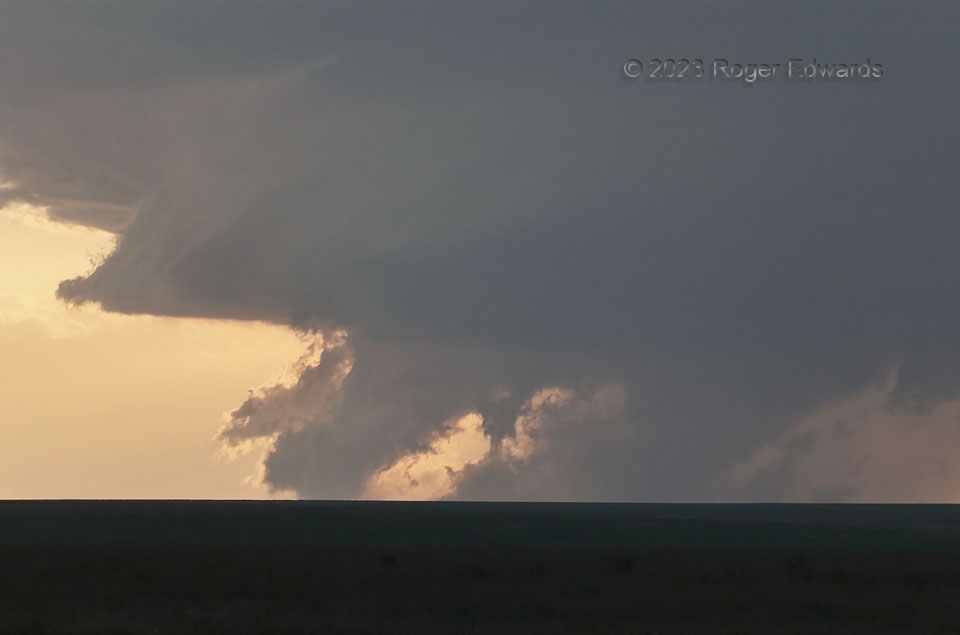Why show a non-tornado when one can show three at once, from the same storm? This oddity came about as a distant, high-based supercell dove south-southeastward across a remote part of southeastern Colorado, between the Purgatoire River and the town of Kim. The skirt-edged wall cloud in the middle to upper part of this shot was real, attending a well-organized midlevel mesocyclone with broad (but not particularly strong, at this time) low-level rotation. A gentle terrain rise in the many intervening miles between me and the storm truncated a view of any gaps between the cloud lowerings and the ground. All were tilted southward from top to bottom, in step with outflow from the rear-flank downdraft. All were behind the wall cloud and mesocyclone, though low contrast makes discerning that difficult for the most funnel-shaped lowering, at right. The small lowering in the middle looks like it could be a tube with scud surrounding it, and a “debris” fan at the bottom. The leftmost lowering is the most obviously scuddy junk. How did I know none were tornadic? They weren’t rotating…just translating, right to left, faster than storm motion, in a manner consistent with being outflow-driven. That was easy. How did I know? The very same zoom lens I had attached to a heavy tripod, and was using to shoot, also made a great monocular to observe the features. Aside from non-rotating scud, other non-tornado types I have in this gallery include outflow dust under a storm base, a dense precip shaft at night, and a real, slowly rotating funnel with unrelated outflow dust in front.
4 NW Pritchett CO (8 Jul 23) Looking W
37.4258, -102.8926
